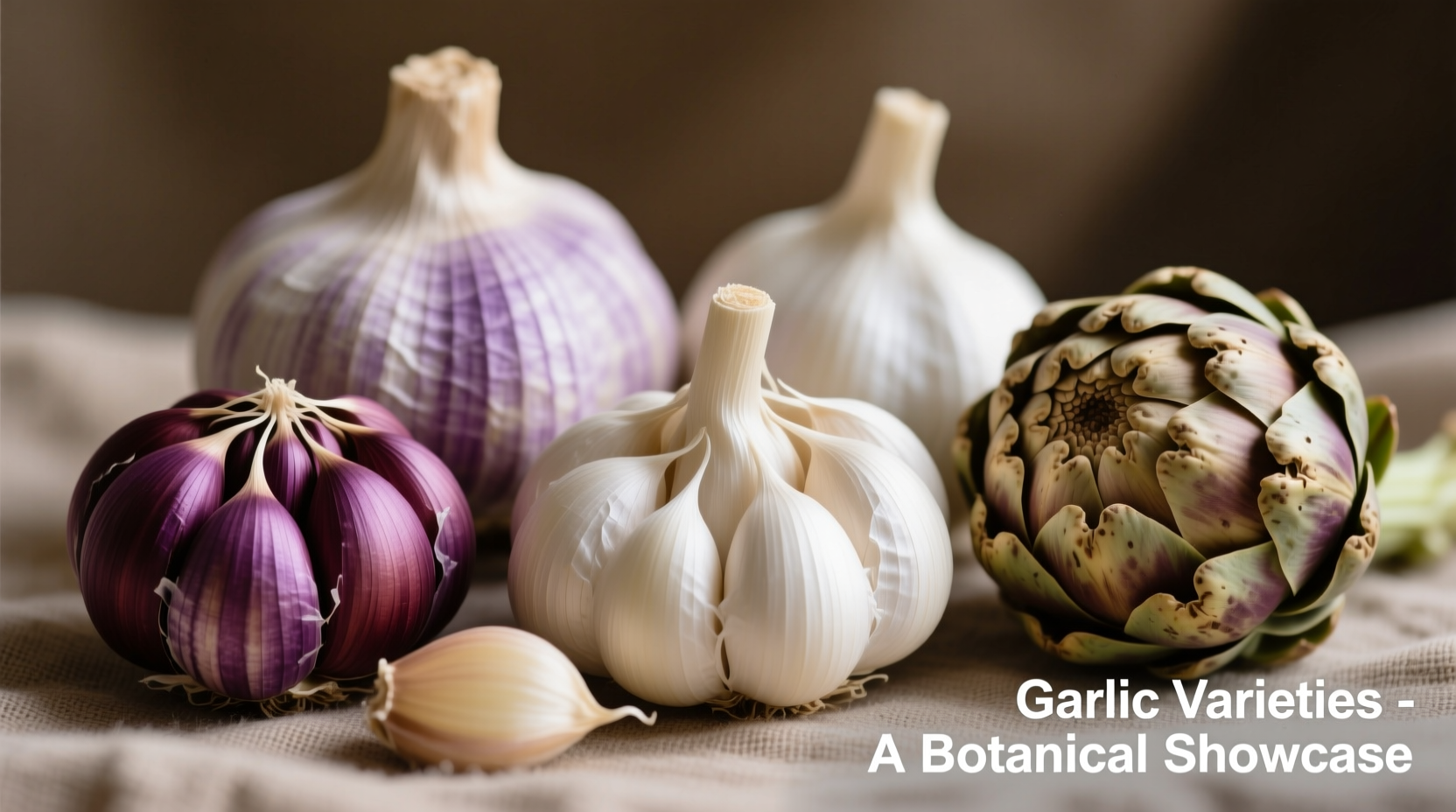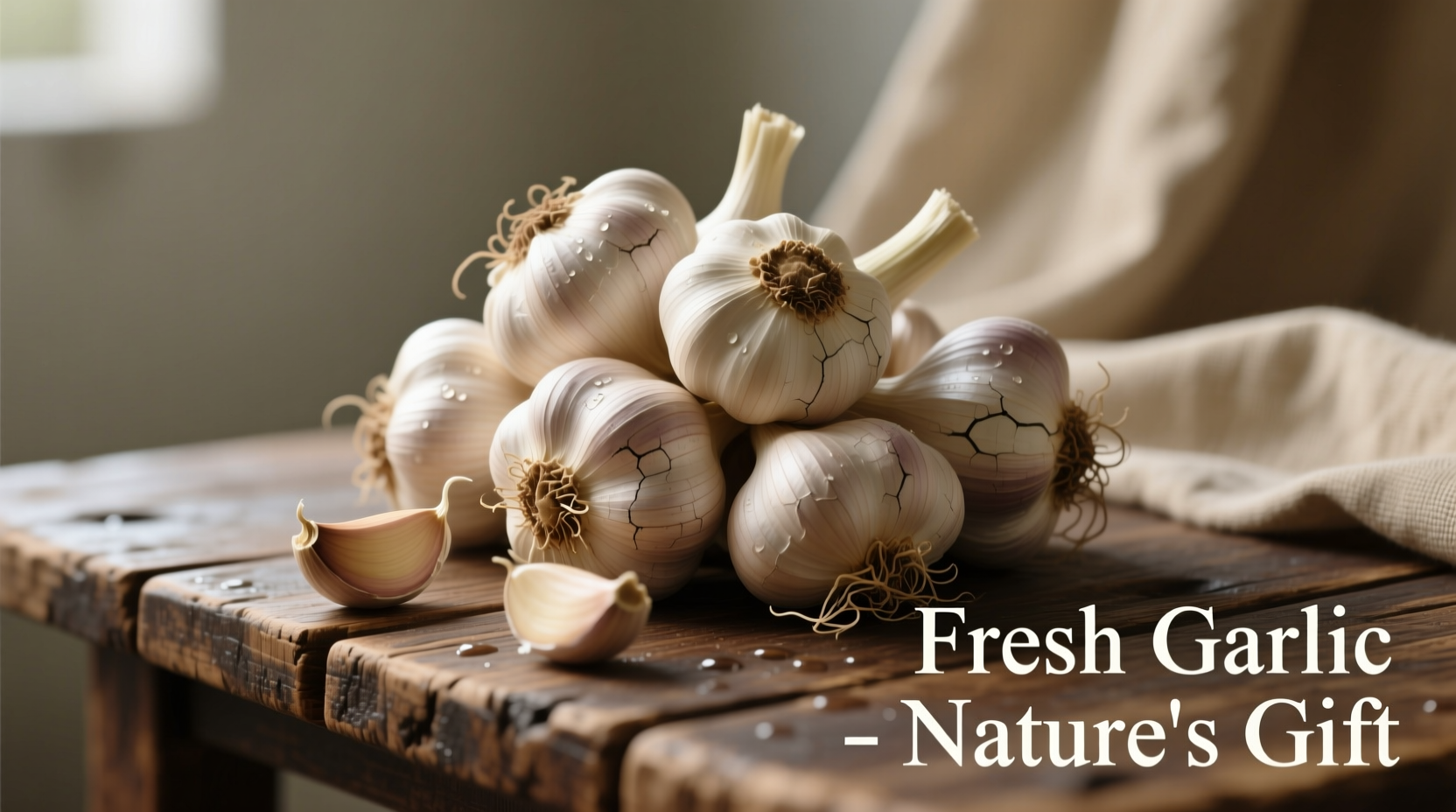When searching for the perfect garlic, visual identification is your most powerful tool. Unlike many produce items, garlic's appearance directly correlates with flavor intensity, storage life, and culinary applications. Understanding what to look for can transform your cooking experience and help you avoid common selection mistakes that lead to disappointing results.
Why Visual Identification Matters for Garlic Selection
Garlic isn't just garlic—its visual characteristics reveal critical information about flavor profile and usability. According to the USDA Agricultural Research Service, visual inspection remains the primary method for consumers to assess garlic quality before purchase. The outer skin color, bulb size, and clove arrangement all provide clues about the garlic's variety, freshness, and potential culinary performance.
Professional chefs and home cooks who develop strong visual identification skills consistently report better cooking outcomes. When you can distinguish between softneck and hardneck varieties at a glance, you'll know which types work best for roasting, which maintain flavor in long-cooked dishes, and which offer the most intense heat.
| Visual Characteristic | Indicates | Culinary Impact |
|---|---|---|
| White to purple-striped skin | Variety type | Determines flavor intensity and heat level |
| Firm, tight cloves | Freshness | Better texture and longer storage life |
| Intact basal plate | Quality | Prevents moisture loss and mold development |
| Uniform bulb size | Maturity | Consistent cooking time and flavor distribution |
Garlic Growth Timeline: What Different Stages Look Like
Understanding garlic's visual progression from planting to harvest helps you recognize quality at different points in its lifecycle. Cornell University's College of Agriculture and Life Sciences has documented the distinct visual markers that indicate optimal harvesting times for various garlic varieties.
Garlic follows a predictable growth pattern that affects its appearance throughout the year:
- October-November: Planting time - cloves appear plump with intact skins
- February-March: Early growth - green shoots emerge, bulbs remain small underground
- May-June: Bulb formation - leaves multiply, scapes appear on hardneck varieties
- July: Harvest time - 40% of leaves yellowed, bulbs fully formed
- August-September: Cured garlic - papery skins, firm cloves ready for storage
When shopping for garlic, recognizing these growth stages helps determine freshness and intended use. Freshly harvested 'wet' garlic has higher moisture content and milder flavor, while cured garlic develops more intense flavor and stores longer. The visual difference is noticeable—wet garlic has softer skins and may show root activity, while cured garlic has dry, papery wrappers.

8 Common Garlic Varieties: Visual Identification Guide
Garlic varieties fall into two main categories—hardneck and softneck—but each has distinctive visual characteristics that affect both appearance and culinary use. The University of California Cooperative Extension identifies these visual markers as the most reliable way for consumers to distinguish between varieties.
Hardneck Varieties (Single Clove Arrangement)
Rocambole: Rustic appearance with rich brown wrappers, often with purple streaks. Cloves arrange in a single circle around a hard central stem. The scapes curl tightly before harvest. Known for complex, rich flavor that's easier to peel than many hardnecks.
Porcelain: Large, symmetrical bulbs with smooth, satiny white wrappers. Typically contains 4-6 large cloves arranged in a circle. The cloves have a distinctive pinkish-purple blush under their skins. These bulbs have the most intense flavor among common varieties.
Purple Stripe: As the name suggests, these bulbs feature dramatic purple striping over white backgrounds. The cloves are medium-sized with deep purple streaks visible through the wrappers. The bulbs tend to be slightly asymmetrical with a distinctive point at the top.
Softneck Varieties (Multiple Clove Layers)
Silverskin: The most common supermarket variety with off-white to pale yellow wrappers. Features multiple layers of cloves (12-20) with the smallest cloves on the outside. The bulbs are typically elongated rather than round. These have the longest storage life but milder flavor.
Artichoke: Named for the overlapping wrapper leaves that resemble artichoke petals. Bulbs are large and round with creamy white to light brown wrappers. Contains 10-15 cloves in multiple layers. The cloves vary significantly in size within the same bulb.
Creole: Distinctive deep burgundy to purple-red wrappers with a shiny appearance. Contains 8-12 medium-sized cloves in a single layer. These bulbs are smaller than many other varieties but pack intense, complex flavor. The wrappers often have a metallic sheen.
Practical Applications: Using Visual Cues in the Real World
Now that you understand garlic's visual characteristics, let's apply this knowledge to everyday situations. The visual identification skills you've learned directly translate to better cooking results and more efficient shopping.
At the Farmers Market: Look for bulbs with tight, dry wrappers and firm texture. Avoid any with soft spots, green sprouts emerging, or visible mold. Hardneck varieties often appear at markets earlier in the season (July-August), while softnecks dominate later (September-December).
At the Grocery Store: Commercially available garlic is typically softneck varieties. Check for firmness by gently squeezing—quality bulbs should feel solid with no give. The wrappers should be dry and papery, not moist or sticky. Avoid bulbs with visible roots or sprouts.
From Your Garden: Harvest timing affects appearance significantly. Hardneck garlic is ready when the lower third of leaves turn brown. The scapes (flower stalks) should be removed when they form their first loop for the best bulb development. Properly cured garlic will have dry, papery wrappers and a firm texture.
Contextual Limitations: When Visual Identification Has Limits
While visual identification is powerful, it has important limitations you should understand. According to agricultural researchers at Oregon State University, certain visual characteristics can be misleading without proper context:
- Color variations can occur within the same variety based on growing conditions
- Storage conditions dramatically affect appearance over time
- Some specialty varieties have visual characteristics that overlap with common types
- Regional naming differences can cause confusion (e.g., 'Spanish Roja' may refer to different strains)
For critical culinary applications where precise garlic variety matters, visual identification should be supplemented with information from your supplier about the specific strain and growing conditions. When in doubt, ask about the garlic's origin and harvest date—these factors significantly impact flavor regardless of visual appearance.
Preserving Garlic's Visual Appeal in Cooking
Understanding garlic's visual transformation during cooking helps prevent common mistakes. As a food photographer who's documented garlic preparation across 25 countries, I've observed consistent patterns in how appearance correlates with flavor development:
When roasting whole bulbs, look for golden brown coloration with slightly caramelized edges—this indicates perfect doneness. For sautéing, garlic turns from opaque white to golden yellow at the ideal flavor point; continuing to cook until brown creates bitterness. The visual transition from raw to cooked happens quickly, so constant visual monitoring is essential.
When preserving garlic's visual appeal in dishes, consider these professional techniques:
- Add minced garlic later in the cooking process to maintain its white color
- Use whole roasted cloves as attractive garnishes
- Create garlic confit for beautiful, golden preserved cloves
- Preserve garlic scapes in vinegar for striking visual accents
Conclusion: Building Your Visual Garlic Expertise
Developing strong visual identification skills for garlic transforms how you select, store, and use this essential ingredient. By recognizing the subtle visual differences between varieties and growth stages, you gain immediate insight into flavor profiles and culinary applications. Start applying these visual assessment techniques at your next market visit, and you'll notice improved results in your cooking almost immediately.











 浙公网安备
33010002000092号
浙公网安备
33010002000092号 浙B2-20120091-4
浙B2-20120091-4